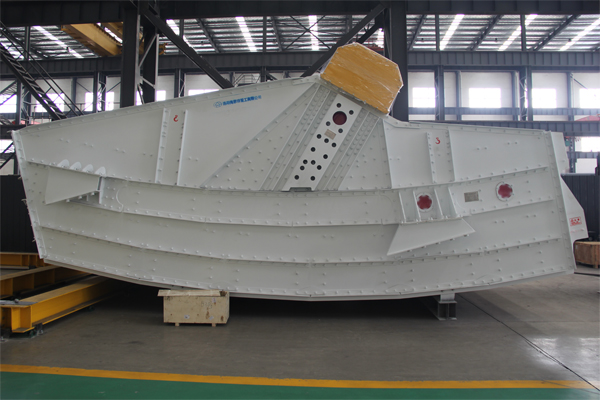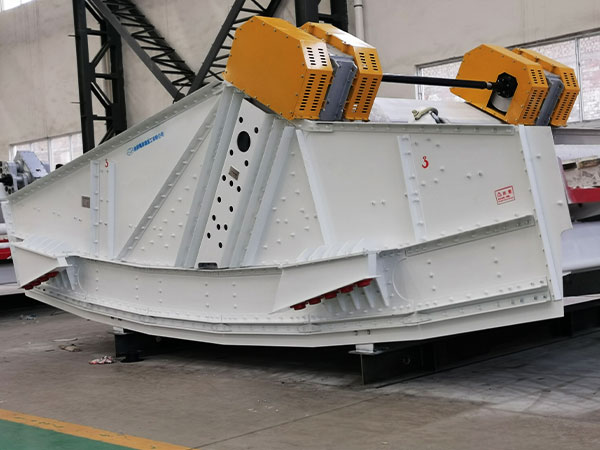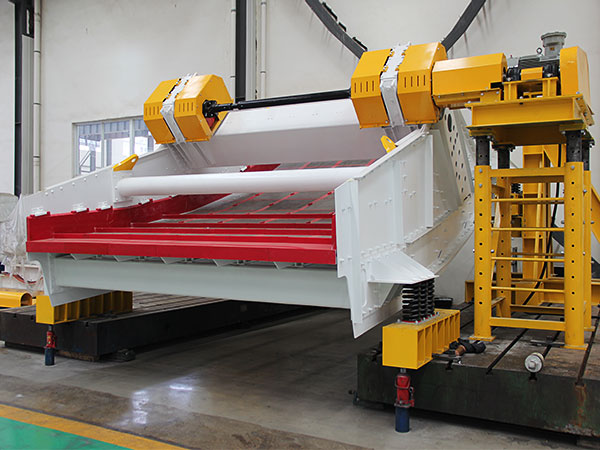How High-Efficiency Linear Vibrating Screens Improve Material Processing and Production Output
In today’s fast-paced industrial environment, manufacturers rely heavily on high-efficiency linear vibrating screens to enhance material separation, reduce downtime, and increase overall productivity. As one of the most widely used industrial screening machines, linear vibrating screens play a crucial role in improving processing efficiency across mining, metallurgy, chemical production, construction aggregates, and recycling industries.
What Is a Linear Vibrating Screen?
A linear vibrating screen is a type of vibrating screening equipment that moves materials in a straight-line motion across the screening surface. This design allows for efficient separation based on particle size, making the machine ideal for fine material screening and large-volume processing.
Compared with circular vibrating screens, linear models offer:
More stable material movement
Higher screening accuracy
Better handling of fine powders and granular materials
High-efficiency versions incorporate:
Dual vibration motors
Optimized screen deck layers
Adjustable amplitude and frequency settings
These upgrades ensure faster separation, higher throughput, and improved reliability.
Key Advantages of High-Efficiency Linear Vibrating Screens

1. Higher Throughput and Production Efficiency
High-efficiency linear vibrating screens significantly boost output by accelerating material separation and improving screening accuracy.
For industries needing continuous and high-capacity processing, such as mining and aggregate production, these material separation machines help maximize daily productivity without requiring additional equipment.
2. Improved Energy Efficiency and Lower Operational Costs
Modern industrial vibrating screens are engineered to reduce energy consumption. Their vibration systems are optimized to produce maximum screening performance with minimal power usage.
This not only reduces energy costs but also minimizes mechanical wear, resulting in lower maintenance expenses and longer equipment lifespan.
3. Versatility for Multiple Industrial Applications
Thanks to adjustable vibration parameters and customizable screen mesh sizes, linear vibrating screens perform exceptionally well in various industries:
Mining & Mineral Processing: Screening ores, minerals, and crushed rock
Construction Materials: Sand and gravel screening, crushed stone grading
Chemical Industry: Powder classification and contamination prevention
Recycling: Sorting plastics, metals, glass, and waste materials
This adaptability makes linear vibrating screens one of the most flexible material screening solutions for industrial production lines.
4. Consistent Product Quality
Accurate screening ensures that material particles meet required size specifications.
High-efficiency linear vibrating screens help:
Maintain stable product quality
Reduce contamination
Ensure consistent particle size distribution
This is especially critical for industries such as metallurgy, chemical processing, and building materials manufacturing.
Common Applications of Linear Vibrating Screens
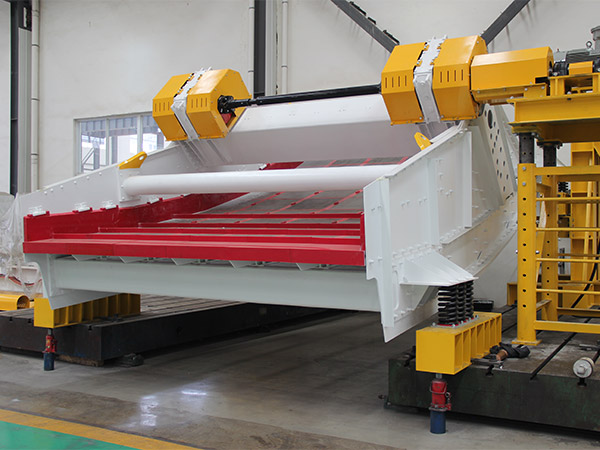
High-efficiency linear vibrating screens are widely used as:
Mining screening equipment for ore and mineral separation
Sand and gravel screening machines for construction aggregates
Fine powder screening tools in the chemical industry
Recycling sorting equipment in waste management plants
Their ability to handle fine, coarse, wet, or dry materials makes them ideal for modern material processing lines.
How to Optimize Linear Vibrating Screen Performance
To keep vibrating screening equipment running efficiently, operators should follow these best practices:
✔ Regular Inspection and Maintenance
Check screen meshes, motors, bearings, and fasteners regularly to avoid unscheduled downtime.
✔ Maintain Uniform Feed Distribution
Ensure even feeding to avoid screen overload and enhance separation accuracy.
✔ Select the Correct Screen Mesh Size
Choosing the right deck configuration directly affects performance and ensures optimal classification.
✔ Adjust Vibration Settings
Fine-tune vibration amplitude and frequency based on material characteristics to achieve the best throughput and precision.
FAQ – High-Efficiency Linear Vibrating Screens
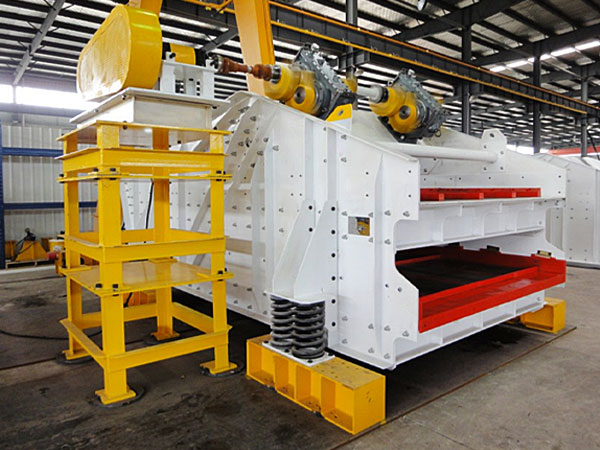
1. What is a linear vibrating screen?
A linear vibrating screen is an industrial screening machine that uses a straight-line vibration motion to separate materials based on particle size. It is widely used in mining, metallurgy, chemical processing, building materials, and recycling for its high precision and stable performance.
2. What makes a linear vibrating screen “high-efficiency”?
A high-efficiency linear vibrating screen is designed with optimized vibration motors, improved screen deck structures, and adjustable amplitude and frequency. These enhancements increase throughput, improve separation accuracy, and reduce energy consumption.
3. What materials can be processed with a linear vibrating screen?
Linear vibrating screens can handle fine powders, granules, crushed stones, sand, ores, minerals, chemical raw materials, and recyclable waste. They are suitable for both dry and wet material screening.
4. What industries commonly use linear vibrating screens?
These screens are widely used in:
Mining and mineral processing
Metallurgy
Construction materials (sand and gravel)
Chemical and pharmaceutical industries
Food processing
Recycling and waste management
5. How does a linear vibrating screen improve production efficiency?
It improves efficiency by providing faster and more accurate material separation. This reduces bottlenecks in the production line, increases throughput, minimizes waste, and ensures consistent product quality.
6. How do I choose the right screen mesh size?
Selecting the correct screen mesh depends on material characteristics such as particle size, moisture content, and required output specifications. Finer materials require smaller mesh sizes, while coarse materials need larger openings.
7. What maintenance is required for a linear vibrating screen?
Routine maintenance includes checking screen meshes, tightening bolts, inspecting vibration motors, lubricating bearings, and monitoring screen deck wear. Regular maintenance ensures longer equipment lifespan and prevents unexpected downtime.
8. How long does a linear vibrating screen last?
With proper maintenance, a high-efficiency linear vibrating screen can operate reliably for several years. Service life varies based on material type, operating environment, and usage frequency.
9. What are the common problems and how to troubleshoot them?
Common issues include:
Screen blockage → Clean mesh or adjust vibration amplitude
Uneven material distribution → Improve feed control
Low screening efficiency → Adjust frequency or replace worn mesh
Abnormal vibration → Check motor synchrony and fasteners
10. Can a linear vibrating screen be customized?
Yes. Most manufacturers can customize screen size, deck layers, vibration motors, material type (carbon steel or stainless steel), and mesh configuration to meet specific application requirements.
11. Is a linear vibrating screen energy efficient?
Yes. High-efficiency models are designed to minimize power consumption while maintaining high screening output, making them cost-effective for long-term operation.
12. Can linear vibrating screens be used for wet materials?
Yes. Many linear vibrating screens are suitable for wet material screening, dewatering, and moisture separation, depending on the design and mesh specifications.
Conclusion
Integrating high-efficiency linear vibrating screens into your production line is a strategic upgrade that enhances output, reduces energy consumption, and ensures consistent product quality. These versatile industrial screening machines deliver precise material separation, helping companies meet growing production demands while maintaining operational stability.
For industries seeking reliable and efficient material separation equipment, linear vibrating screens remain one of the most effective and future-ready solutions in modern processing technology.

